Planning a trip to Spain in 2025? If good food is high on your travel wishlist, you’re in for a treat. From the vibrant tapas bars of Seville to the Michelin-starred magic of San Sebastián, Spain is a dream destination for food lovers of every kind. Whether you’re a seasoned foodie or just dipping your toes into Spanish food experiences, this guide will help you explore the best places to visit in Spain for food lovers—one region (and one delicious bite) at a time.
Spain, the beautiful country of wine and songs.
Johann Wolfgang von Goethe
Spain’s culinary scene is incredibly diverse. Every region has its own proud food traditions, flavors, and must-try dishes. So grab your appetite and let’s dig into the ultimate Spain culinary travel guide for 2025.

Image: Tapas bar in Seville with a variety of dishes.
I. Understanding the Best Places to Visit in Spain for Food Lovers Through Its Cuisine
Spanish cuisine isn’t just about eating—it’s about connection, culture, and community. From tapas in the south to pintxos in the north, culinary experiences in Spain are woven into everyday life, reflecting the flavors and traditions of each region.
Tapas and Pintxos: A Social Culinary Cornerstone
In Spain, dinner doesn’t always mean a big meal at a fancy table. Often, it means standing elbow-to-elbow at the bar, laughing with friends, and hopping from one spot to the next—“tapear,” as the locals say.
In southern cities like Seville and Granada, tapas are a way of life. Order a drink, and a small dish usually comes with it—grilled chorizo, garlicky prawns, or patatas bravas with spicy aioli. The rule? Try everything and never stay in one place too long.

Head north to the Basque Country, and you’ll meet tapas’ fancier cousin: pintxos. These mini masterpieces are often skewered on toothpicks and lined up on bar counters like edible art. San Sebastián, in particular, is a pintxos paradise—join a pintxos tour here and you’ll taste your way through some of the best bars, guided by locals who truly know their jamón from their jamón ibérico 😋
💡 Pro tip: Pintxos are often self-serve. Grab a plate, collect what looks good, and pay by the stick count at the end.
From Andalucía to the Basque coast, tapas and pintxos in Spain turn every night into a flavorful adventure—and you’ll quickly learn that sharing food means sharing the moment, too.
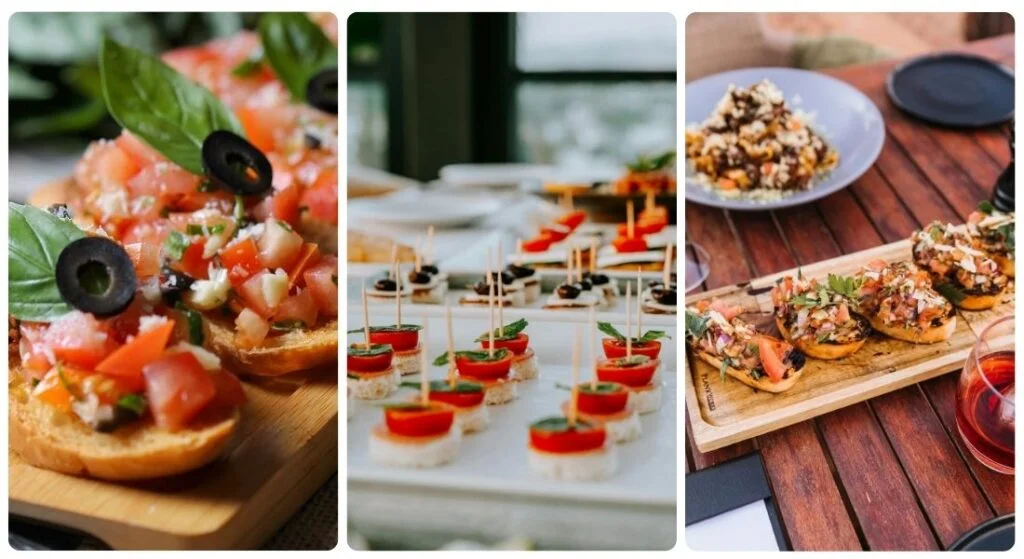
Image: Different kinds of pintxos in Spain
Regional Specialties: A Taste of Spain
Sure, tapas and pintxos are amazing—but if you stop there, you’re barely scratching the surface. Every region in Spain brings its own flavor to the table, and exploring these traditional Spanish dishes is half the joy of the journey.
Here’s how regional Spanish cuisine hits different, depending on where you are:
🌾 Valencia – Where Paella Was Born: In this sunny coastal region, paella isn’t just a dish—it’s practically a religion. You’ll find versions with rabbit, snails, seafood, or even black squid ink rice. Each one tells a local story in every spoonful.
🌊 Galicia – Heaven for Seafood Lovers: Up in the misty northwest, Galicia serves up ocean-fresh wonders:
- Empanada de berberechos (cockle pie)
- Sardine tarts, juicy mussels, and oysters fresh from the ría
- All best paired with a crisp glass of local Albariño wine
🌧 Basque Country – Pintxos, But So Much More: Yes, San Sebastián’s pintxos are world-famous, but the region’s hearty stews, perfectly runny tortilla de patatas, and buttery jamón ibérico are just as crave-worthy. Expect bold flavors and fine-dining flair—even in a bar.
☀️ Andalusia – Where Moorish Influences Meet Modern Bites: Here, the food is sun-soaked and soul-warming. Don’t miss:
- Artisanal goat cheese
- The best olive oil in Spain
- Gazpacho and salmorejo to cool down on a hot day
- And of course… the legendary jamón ibérico de bellota
💡 Pro tip: Bring stretchy pants. Seriously.
Each bite across these food regions in Spain is a window into centuries of culture, tradition, and a deep love of good eating. And trust me, once you start—you’ll want to try it all.
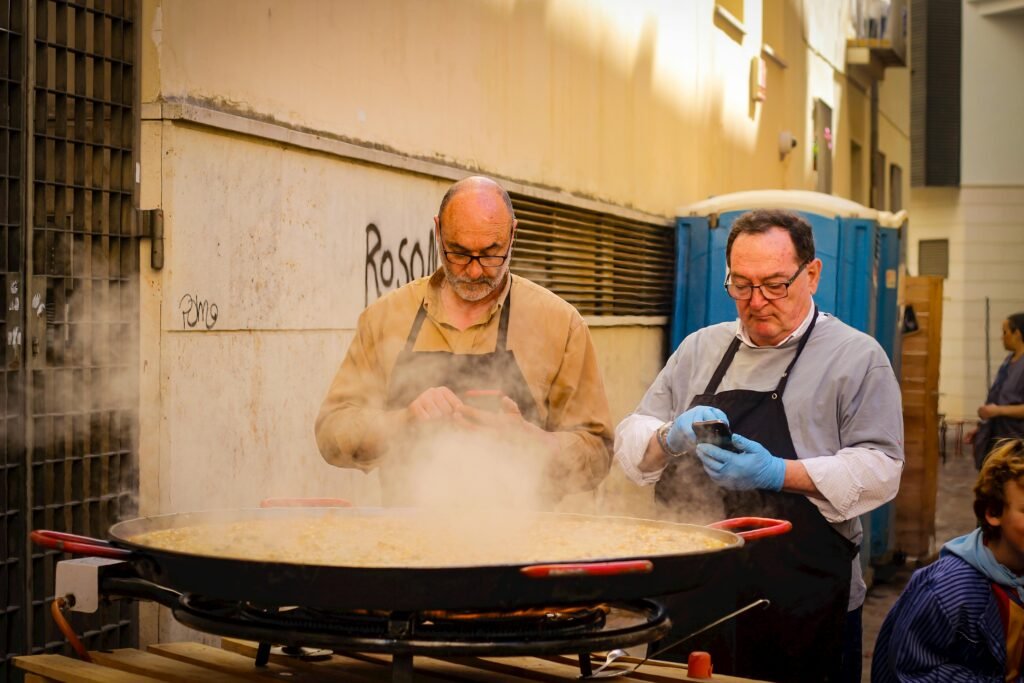
Image: Paella cooking in Valencia.
Planning your food route? Explore Spain’s regional specialties here: Spain’s official tourism website.
II. Spanish Wine Regions: A Journey Through Terroir
Let’s get one thing straight—Spanish wine isn’t just “red from Rioja.” Spain’s wine world is rich, regional, and seriously underrated. With landscapes that stretch from misty Atlantic coasts to sunbaked Andalusian hills, each glass tells a different story.
Exploring Spanish wine regions is like taking a flavorful road trip across the country—only better, because wine.
🍷 Rioja – The Soul of Spanish Red Wine
In the rolling hills of La Rioja, tradition runs deep. This is the spiritual home of Tempranillo, Spain’s star red grape. Think:
- Long aging in oak barrels—and even longer memories after a tasting
- Deep, earthy reds with notes of vanilla and spice
- Vineyards lined with stone villages and age-old bodegas
Penedès: Birthplace of Cava
Head west of Barcelona and you’ll enter Cava country. The Penedès region is famous for its crisp, celebratory sparkling wine, made using the same method as Champagne but with local flair.
Best way to explore?
🚴♀️ Rent an e-bike, sip bubbly between vineyard stops, and take in Mediterranean views along the way.
Rías Baixas: Crisp Whites by the Atlantic
Over in Galicia, the seafood is unbeatable—and so is the wine that goes with it. Albariño is the star: light, citrusy, and perfect with oysters or pulpo.Imagine sipping a chilled glass while watching waves roll into a seaside port. Now you’re doing Spanish white wine right.
Andalusia: Sherry and Beyond
Down south in Jerez, Sherry isn’t just a drink—it’s a ritual.
From dry, nutty Fino to sweet, velvety Pedro Ximénez, this is wine with soul (and serious history).
Don’t stop there—around Málaga, Moscatel-based wines are rising stars. Bold, aromatic, and sun-drenched—like the region itself.
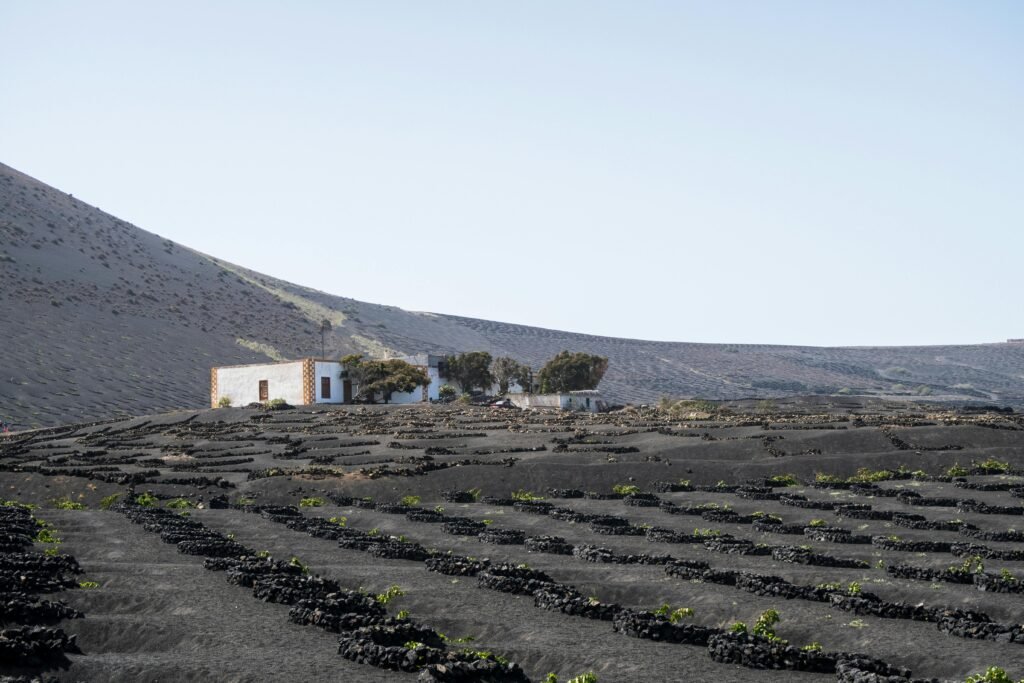
Image: Vineyards in Canary Island.
Whether you love bold reds, bubbly whites, or something sweet and surprising, Spain’s wine regions will open your palate and your perspective.
The best wine in Spain? It’s the one poured into your glass after a morning at the market and before a long, laughter-filled dinner.
💡 Pro tip: Most wine regions offer tastings and tours—book ahead, sip slowly, and bring a corkscrew home.
Craving wine with your wanderlust? Check top winery tours across Spain: Wine tours in Spain
III. Guided Tours and Tastings: Unlocking Culinary Secrets
You can eat well in Spain just by wandering—but if you really want to unlock the stories behind every bite, a local guide can transform a simple meal into a deep-dish cultural experience.
These guided food tours in Spain are more than just delicious—they help you eat like a local, not just like a tourist.
Here’s how you can dig deeper into Spanish culinary experiences:
- 🍢 Tapas Tours: Wandering from bar to bar is fun. But doing it with a local who knows exactly where to go and what to order? Game-changer.
Join a tapas tour in Madrid, and you’ll discover hole-in-the-wall spots, learn how to pair wine with jamón, and maybe even pick up some tapas etiquette along the way.
Try: Insider’s Evening Tapas & Wine Walk – it’s part dinner, part cultural deep-dive. - 🧀 Pintxos Tours: In San Sebastián, pintxos aren’t just food—they’re art. And the locals have rules.
A guided pintxos crawl teaches you how to order confidently, pay by the stick, and recognize which bar has the best gambas without saying a word. - 🍇 Winery Tours: Spain’s wine culture is rich, and a wine tour in Rioja or Penedès is the best way to experience it. You’ll walk through vineyards, chat with winemakers, and sip from the source—whether it’s a barrel-aged Tempranillo in Rioja or crisp cava near Barcelona.
- 🛍️ Market Tours: From the Mercado de San Miguel in Madrid to La Boqueria in Barcelona, markets are the beating heart of Spain’s food culture. A local-led tour shows you more than just produce—you’ll learn about seasonal ingredients, taste regional snacks, and even practice ordering in Spanish (don’t worry, your guide has your back).
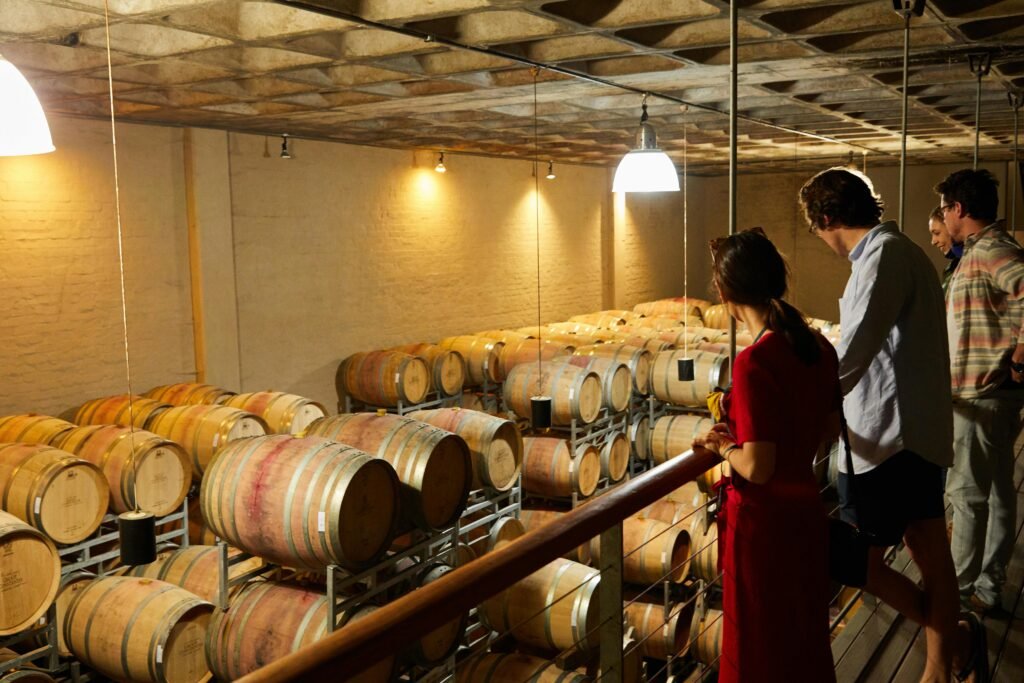
Image: Group enjoying a wine tour in Rioja.
💡 Pro tip: Many tours include skip-the-line perks, small group sizes, and a lot of laughs. Come hungry.
Whether you’re a curious beginner or a dedicated foodie, these guided tastings and culinary tours in Spain are the ultimate way to connect with the culture—one bite and one story at a time.
IV. Dining Like a Local: Practical Tips for an Authentic Experience
To avoid tourist traps and savor authentic flavors:
- The “Two Streets Behind” Rule: In crowded tourist areas, venture a couple of streets away from the main squares to find more local establishments.
- Observe the Locals: See where locals are eating. A busy bar filled with Spaniards is usually a good sign.
- Spanish Dining Hours: Lunch is typically between 1:30 PM and 3:30 PM, and dinner often starts around 9:00 PM or later, especially in the south. Eating outside these hours might indicate a more tourist-oriented spot.
- Embrace Standing at Bars: Many traditional tapas and pintxos bars have limited seating. Embrace the standing culture for a more authentic experience.
- How to Order: For tapas, order a few dishes to share. For pintxos, you can either take the cold ones displayed on the bar or order hot ones from the chalkboard menu.
V. Exploring Local Markets and Artisans: A Feast for the Eyes and Palate
Spanish food markets are more than just places to shop—they’re cultural landmarks where flavors, colors, and community come together. For food lovers exploring Spain, visiting local markets is a must-do experience to discover artisanal products, regional specialties, and the heart of Spanish culinary life.
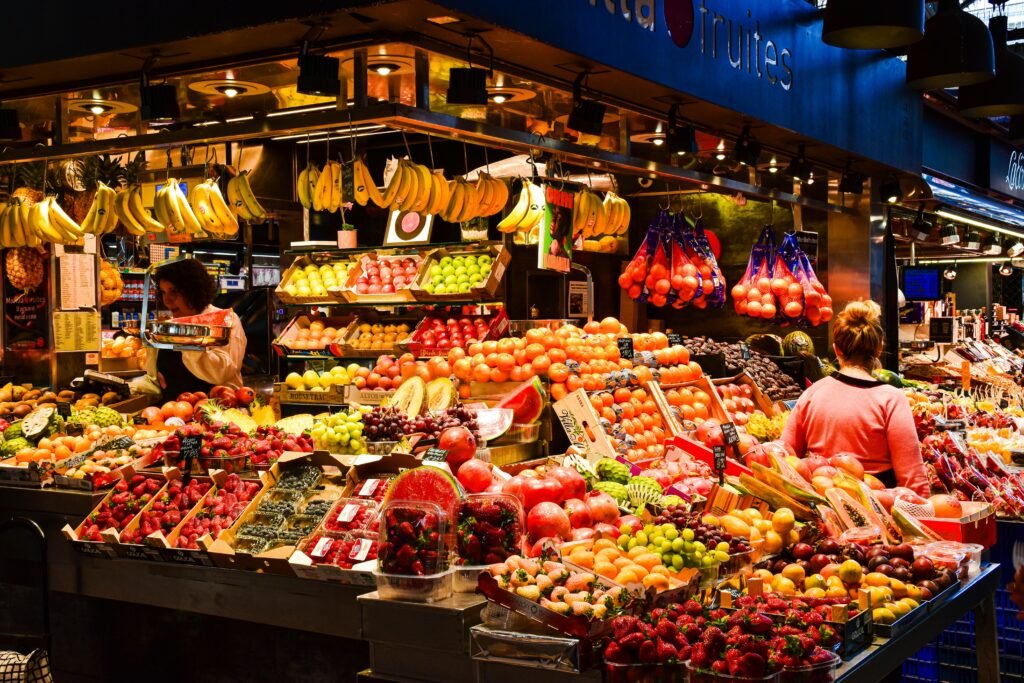
Image: La Boqueria market in Barcelona.
Spanish food markets aren’t just for groceries. They’re where locals catch up with neighbors, argue over the best anchovies, and sip mid-morning wine with olives on the side. And for travelers? They’re one of the most authentic—and delicious—ways to discover the soul of a region.
Start with the iconic La Boqueria market in Barcelona, where colorful fruit stalls meet fresh seafood counters and sizzling tapas bars. But don’t stop there—every city has its own version:
- In Madrid, head to Mercado de San Miguel for a classy take on traditional favorites
- In Valencia, explore Mercado Central, a modernist gem packed with local produce
- In Seville, browse for artisanal cheeses, Andalusian olive oils, and honey from white-washed villages
💡 Tip: Go early! You’ll beat the crowds and get the freshest bites. Plus, vendors love a curious (and polite!) traveler.
Don’t leave without tasting a drizzle of Spanish olive oil—preferably poured over warm bread with a pinch of sea salt. It’s simple, but it captures everything that makes artisanal products in Spain so extraordinary: purity, pride, and generations of tradition.
Whether you’re hunting for the perfect jamón or just soaking up the atmosphere, food markets in Spain are where culture, flavor, and humanity all come together—in one delicious, chaotic, unforgettable place.
🍤 Craving even more flavor? Check out what to eat in Thailand — it’s a foodie’s dream, from street noodles to sweet mango sticky rice.
VI. Beyond the Tourist Trail: Hidden Gems Among the Best Places to Visit in Spain for Food Lovers
Big cities get all the foodie fame—but Spain’s smaller towns and lesser-known regions are bursting with flavor, charm, and local secrets that most travelers miss. If you’re hungry for off-the-beaten-path food experiences in Spain, these under-the-radar gems will steal your heart (and maybe your diet plans too 😅).
- 🍾 Penedès (Catalonia): Just an hour outside Barcelona, this region is Cava country. Explore rolling vineyards, family-run wineries, and enjoy Cava tastings right at the source. It’s quieter than the big-name wine regions but equally (if not more) delightful.
- 👨🍳 Girona (Catalonia): A medieval town with a world-class culinary reputation. It’s home to El Celler de Can Roca, often ranked among the best restaurants in the world. Even if you don’t score a reservation, Girona’s food scene—from local markets to creative bistros—is worth the trip.
- 🦐 A Coruña (Galicia): A coastal haven for seafood lovers. Think razor clams, octopus, and oysters pulled straight from the Atlantic. Plus, you’ll find warm Galician hospitality in every bite.
- 🥘 Córdoba & Ronda (Andalusia): In Córdoba, don’t miss rabo de toro (braised oxtail), a local specialty with centuries of flavor. In Ronda, breathtaking views come with hearty Andalusian fare and a strong glass of local red wine.
- 🍻 Almería (Andalusia): This southern gem has a unique tapas culture—order a drink and you get a tapa for free. It’s casual, fun, and feels wonderfully unpolished in the best way.
- 🌿 Extremadura: One of Spain’s most underrated regions for food, Extremadura is known for its wild landscapes, rich meats (like jamón ibérico straight from acorn-fed pigs), and emerging vineyards. Culinary tourism here is still low-key, which makes it all the more magical.
- 🍏 Asturias: Head north for bold, hearty cuisine and cider-pouring rituals that feel more like a performance. Try fabada asturiana (bean stew) or sample fresh cheeses in tiny mountain villages.
💡 Pro tip: These lesser-known food towns in Spain are perfect for renting a car and exploring at your own pace—each stop a flavor detour worth taking.
So if you’re craving more than tapas and city bites, these hidden food destinations in Spain will show you the depth, warmth, and authenticity that only locals truly know.
VII. Plan Your Gastronomic Getaway: Essential Advice for Spain Travel
So, you’re ready to eat, sip, and explore your way through Spain? Amazing choice. But before you dive fork-first into your itinerary, a bit of planning can go a long way in turning a tasty trip into an unforgettable gastronomic getaway in Spain.
Here are some smart Spain food and wine travel tips to help you prepare like a pro:
- 🍂 Best Time to Visit: Spring (April–June) and fall (September–November) are perfect for culinary travel in Spain—with milder weather, fewer crowds, and food festivals or wine harvests in full swing.
- 🚅 Getting Around: Spain’s high-speed AVE trains are fast and scenic, great for hopping between cities. But if you want to reach rural food spots, renting a car (especially from hubs like Málaga or Bilbao) gives you the freedom to roam at your own pace.
- 🏡 Where to Stay: Book early during high season, especially in popular food destinations like San Sebastián or Seville. For a local feel, try staying in a rural finca or boutique hotel near vineyards and markets.
- 🍽️ Make Reservations: Top restaurants and winery tours fill up fast—especially if you’re aiming for Michelin stars or popular pintxos spots. A little advance planning = no foodie FOMO.
- 🧠 Keep an Open Mind: Don’t just stick to what you know—order the dish you can’t pronounce. That mystery plate in Granada or rustic stew in Asturias might just become your favorite bite of the trip.
- 💸 Budget-Friendly Eating: Spain is surprisingly affordable for food lovers. Look for menú del día (daily lunch specials), or graze through tapas for a wallet-friendly (and endlessly shareable) meal.
- 🗣️ Speak a Little Español: You don’t need to be fluent, but even a simple “¿Qué recomienda?” (What do you recommend?) goes a long way. Locals will appreciate your effort—and may let you in on their secret favorites.
- 📱 Use Tech to Your Advantage: Download offline maps, translation apps, or even join food-focused travel forums. And of course, stay connected on the go with a Gohub eSIM, so you’re never lost, offline, or stuck without Google Translate at a tapas bar.
💡 A good meal feeds your body. But a culinary adventure in Spain? That feeds your soul. 🇪🇸🍷
VIII. Conclusion: Savoring the Spanish Spirit
From sun-kissed vineyards in Rioja to bustling tapas bars in Seville, culinary travel in Spain is so much more than just a food trip—it’s a journey into the soul of a country that lives and breathes flavor.
The beauty of Spanish food and wine lies in its variety: each region, each dish, each glass tells a story. Whether you’re feasting on seafood in Galicia, sharing pintxos in San Sebastián, or sipping cava in Penedès, every experience brings you closer to the people and culture behind the plate.
So pack your appetite, learn a phrase or two, and let your taste buds lead the way. Because the best places to visit in Spain for food lovers aren’t always listed in a guidebook—they’re discovered one bite, one glass, and one warm local smile at a time.
🍷 ¡Buen Provecho! Your unforgettable Spanish culinary adventure is just beginning.
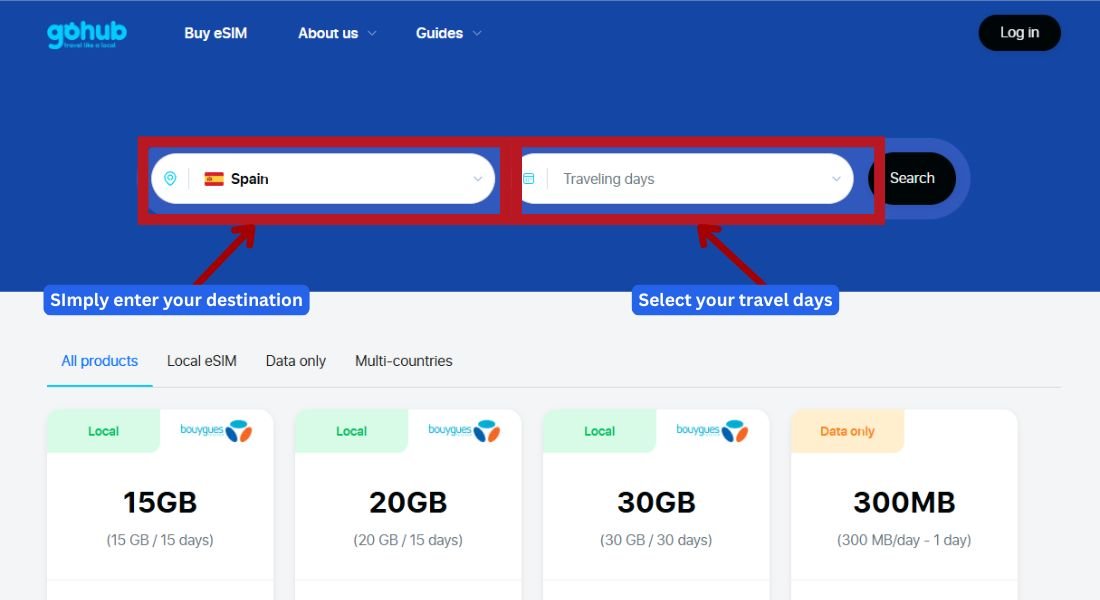
Image: Screenshot of the GoHub eSIM webpage, highlighting the destination input field with “Spain” selected, illustrating how users can easily search for eSIM data plans.
🌍 Food + travel = the ultimate combo. Stay connected with a travel eSIM that works across Europe and Asia, so you never miss a meal rec or a map again.








